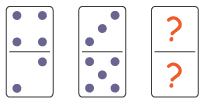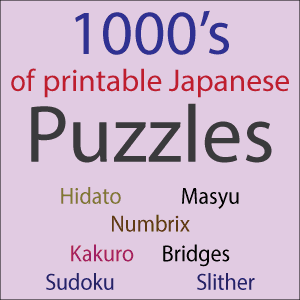KenKen-based puzzles
MathDoku, or KenKen, math puzzles for kids are great to develop math skills and math teachers gladly incorporate them in the
math lessons. It takes both logic and arithmetic skills to solve them.
The Rules of MathDoku are the same as KenKen puzzles:
1. Digits may appear only once in each row and column
Similar to Sudoku, digits may only appear once in each row and column.
In the 4 by 4 puzzle, these are the digits 1 to 4, in the 6 by 6 MathDoku the digits 1 to 6 and in the
9 by 9 the digits up to 9.
2. The grids are divided in cages with target numbers and operators
The grids are divided in clearly marked cages. Each cage has its target number and an operator
(addition, subtraction, multiply or division sign).
3. Find a mathematical solution using the operator and target.
Find a mathematical solution to create the target number given the cage's operator.
The target can be the sum, difference, product or quotient.
4. Know the number combinations
If a 3 cell cage has a '6' as target number and a + as operator, you need to fill in the
numbers 1, 2 and 3. other combinations are not possible. It is important to recognize
the possible number combinations that can occur in combination with the operator. The more
operator combinations you know, the faster you will solve these math puzzles.
5. Each puzzle has only 1 solution
Just like Sudoku, Hidato and Numbrix, the MathDokus can have only 1 possible solution.
Example of a MathDoku puzzle:

This Mathdoku 4 by 4 puzzle is not that difficult to solve. The top left cage with target 12 can only contain the numbers '3'
and '4', the 3+ cage only the '1' and '2', and so on. In this math puzzle it is important to know the number and operation combinations
for the digits 1 to 4. Math teachers will love these KenKen puzzle as they enhance their students overall arithmetic and math skills.



.gif)
.gif)
.gif)
.gif)
.gif)
.gif)
.gif)
.gif)
.gif)



